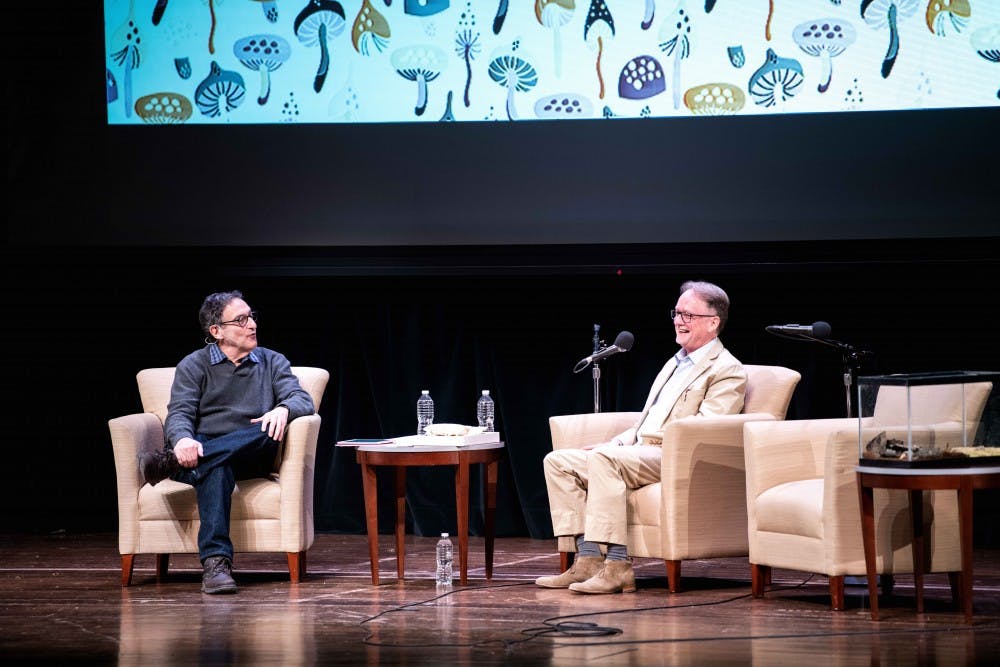NPR's Science Friday radio host Ira Flatow beamed as he took the stage of Miami University's Hall Auditorium on Saturday evening.
"They're doing some great science on this campus, it's wonderful to see," Flatow said to the packed audience. "We look at you as part of the show, so if you hear something or see something that strikes you as funny, or if you don't -- we've had some boos in the past -- feel free to laugh or applaud or let us know how you're feeling."
Saturday night's recording of Science Friday was titled "Live at Miami: Nature's Secrets" featured segments from two Miami professors, Nicholas Money and Richard Lee. Miami alumna and assistant professor of biology at Mount St. Joseph University, Clara do Amaral, was also on the air with Lee (her former professor) and Denise Su, the curator and head of paleobotany and paleoecology at the Cleveland Museum of Natural History.
Miami's Men's Glee Club also performed throughout the recording of the podcast starting the night off with a bang with a rendition of Tom Lehrer's "The Element Song."
Later on Flatow and Money, a mycologist and director of Miami's Western Program, discussed the role that yeast plays when researching fungi.
"I like the title," Flatow said, referring to Money's new book "The Rise of Yeast: How the Sugar Fungus Shaped Civilization."
"It wasn't my first choice," Money said, laughing. "My first was 'Yeast of Eden.'"
After Money left the stage Flatow introduced Su who talked about her work in paleobotany and paleoecology and her research in both which focuses on building a more cohesive history of how our ancient human ancestors lived and which environmental factors shaped the evolution of mankind.
"I always say it's like putting together a puzzle, but you have to find the piece yourself," Su said.
Su shared several skulls of ancient otters and talked in depth about how fossilized bones can tell historians and archaeologists more about the environment in which these animals lived in.
Students, faculty and community members in the audience also had the opportunity to ask questions throughout the recording of the episode.
One man asked Su, "What did we eat and what was our activity like, maybe, two and a half million years ago?"
While Su said that we don't know exactly what humans ate, it's safe to assume a lot of our nutrition was found by gathering various vegetation.
The final guests of Science Friday, Lee and Amaral, discussed their work with flies and frogs and how these insects and amphibians can adapt to extremely cold environments.
"When you say freeze tolerant does it really actually freeze solid?" Flatow asked Amaral about the two wood frog specimens she brought on the show.
"Yes, they really freeze solid," Amaral said.
"So, I can hit them on the table?" Flatow asked jokingly.
"You probably shouldn't," Amaral replied.
Lee also spoke about his research on Antarctica studying the Belgica antarctica, a wingless midge and the only insect found in Antarctica. The midge is also considered to be the largest animal on Antarctica, coming in around less than a quarter of an inch long.
Flatow wrapped up the recording by thanking Miami president, Greg Crawford for organizing the event and the Glee Club ended the evening by performing "Oh Shenandoah."
Those interested in listening to episode can tune into "Science Friday Live" from 2-4 p.m. this Friday, April 28.
doyleca3@miamioh.edu

